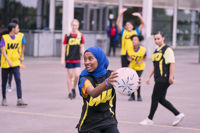
Discrimination and equality
A look at the legislation around discrimination and equality that sports bodies need to comply with

A look at the legislation around discrimination and equality that sports bodies need to comply with

Be the first to know about what’s new at the SGA.
Signing up is free and fast and you will receive: